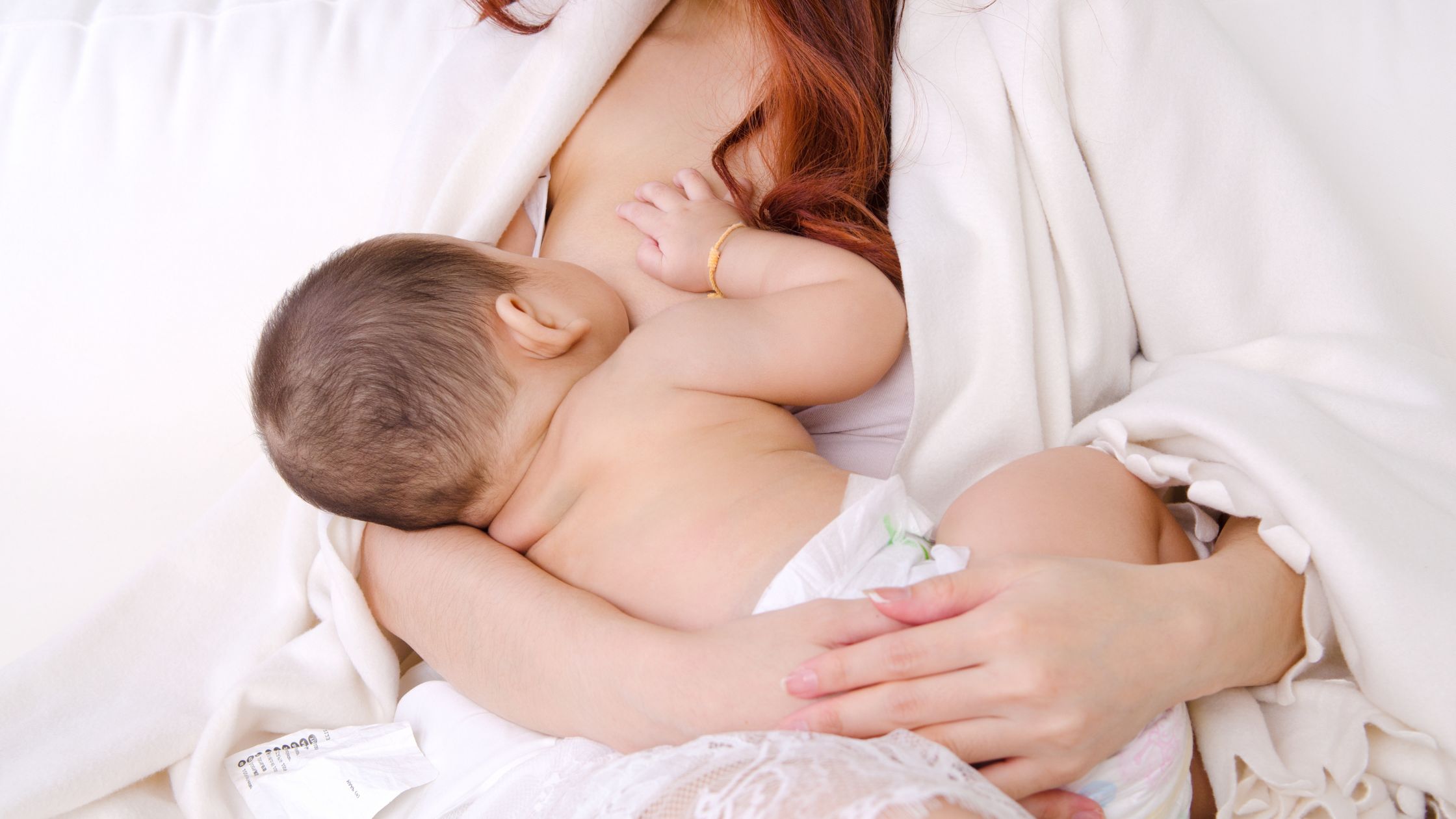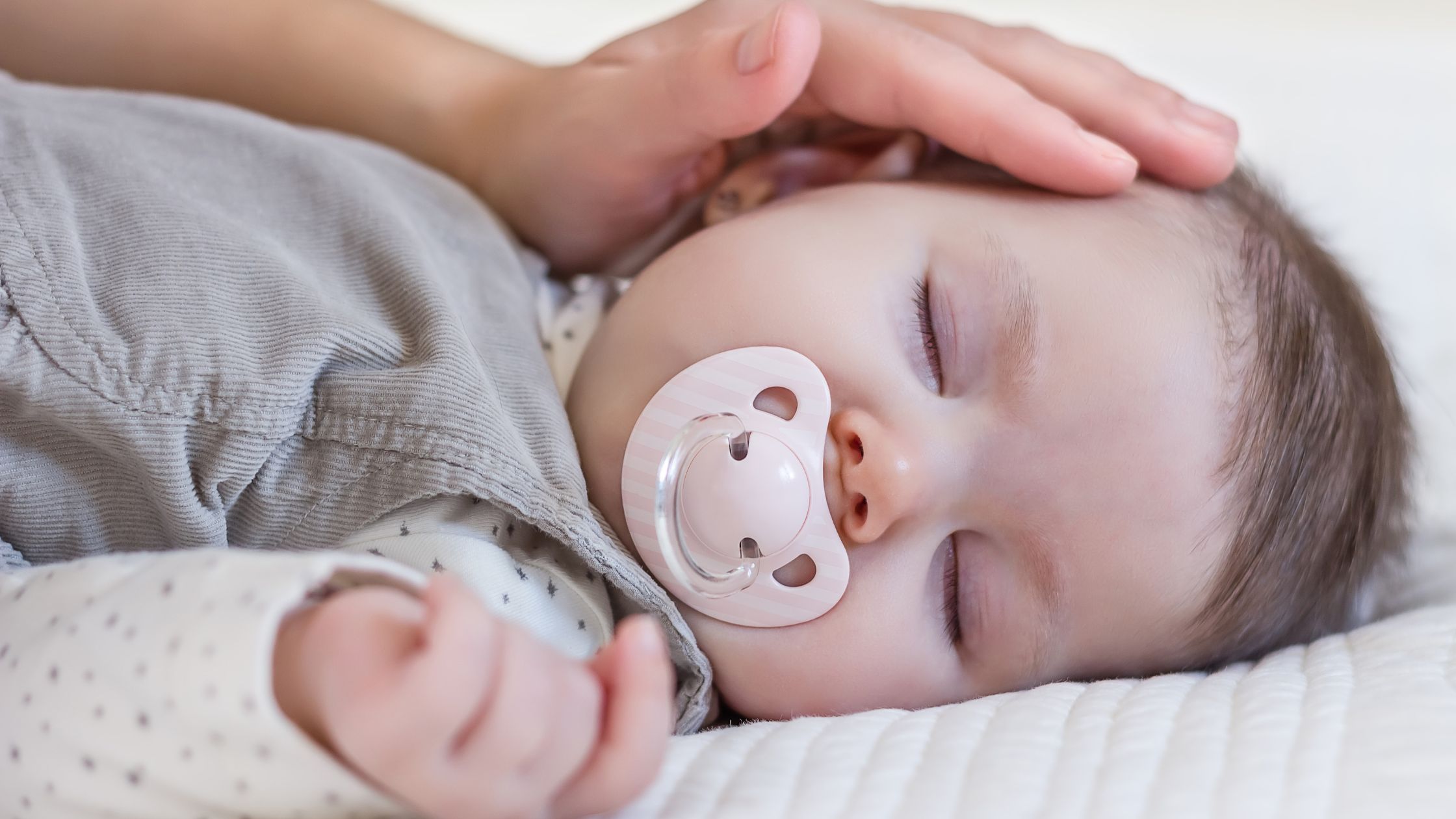New parents frequently have two main worries. How to feed the right amount of milk? And does the infant sleep and drink enough milk? Despite being two distinct issues, they significantly impact one another. For more sleep, most parents will do almost anything. But how can they choose safe sleeping arrangements without affecting the milk flow?
There are many ways to encourage your breastfed baby to get a little more of their recommended amount of sleep at night than during the day, even if it might take some time before your newborn baby allows you to have an uninterrupted night of sleep.
Learn how to gently encourage your breastfeeding baby to sleep through the night for longer durations so that you can also obtain longer stretches of sleep by reading on.
How do you feed your baby during sleep training?

When you feel ready, you can begin training your young child. Most parents wait until their child is eating solids before teaching them how to self-soothe at night. At three months old, I sleep-trained both of my children because I could no longer handle the lack of sleep.
Don't hesitate to begin sleep-training your breastfeeding baby as soon as possible if you are experiencing sleep deprivation and finding it difficult to carry out daily duties.
It's also acceptable if you feel more at ease waiting until your child is a little older.
The essential idea is that sleep-training a breastfed or formula-fed baby is the same process in both cases.
Consider the case where your infant wakes up in the middle of the night. You'll be advised to feed him to sleep if this occurs. However, this will just exacerbate the feed-to-sleep association, so be sure that he doesn't nod off while you're holding him.
Instead, try feeding him and putting him back into his crib while he's still sleepy if he's younger or awake if he's older.
I would also advise delaying giving your infant a feed for at least five minutes. In between cycles, newborns occasionally wake up but automatically fall asleep without a meal. Do not assume that because your baby wakes up from sleep, he must be fed immediately. He is just between sleep cycles. The objective is to teach him how to go back to sleep independently.
Sleep training methods for breastfed babies
Cradle hold

Most of us envision nursing a baby in this position because it is the most conventional breast-or chest-feeding posture.
With the arm closest to the breast you are nursing from, you cradle your baby's body. Therefore, you will hold their torso with your left arm if they are nursing on your left breast. Make sure they are tummy to tummy with you and that their head is turned toward your chest while you gently cradle their back with your forearm.
To make it simpler for the infant to latch, you can curve your nipple or support your breast with your free arm.
Cross-cradle hold
This position, a variation of the cradle position, enables you to provide your breast and the baby with extra support. It also gives the parents additional control, which is an excellent position for new parents.
Hold your baby's body with the arm that isn't holding the breast you're nursing. Your arm closest to your breast should be used to hold and support it.
For instance, if your infant is nursing on your left breast, you would support your left breast with your left hand while holding it in place with your right arm.
Football holds

This position sometimes called the "rugby hold," is excellent for feeding after a C-section since it removes the baby's weight from your lap and away from your incision. Additionally, this posture lets you see your baby nurse more clearly and check if they are latching correctly.
With your arm supporting their back and your fingers cradling their neck, you hold your infant on the side of your body in this posture. You can keep your breast with the other hand as you latch them on.
Frequently, supporting the baby's body with a cushion is beneficial.
Football pause for twins
The football hold is a preferred nursing position for parents of twins. There will be a baby on each breast and each side of you. Using a nursing cushion, you can assist your newborn while they assume this posture. It is also beneficial to have a helper nearby to pass you the infants.
Side-lying position

This position is one of the most effective ones for new parents to master since it allows them to rest, and boy, do you need to rest when breastfeeding all day and night!
Make sure there are no cushions or additional blankets on the surface you're nursing on first. Lie on your side with your baby next to you, tummy to tummy, in the same position. As they start to latch on, place them just below your breast.
With a pillow supporting your neck or back, you can help your infant with your free arm.
Laid-back breastfeeding
This position encourages your baby to eat by appealing to their biological needs, and it's also very cozy for you.
You lean back while supported by pillows, the edge of a couch, or a chair in this position. After that, you lay your infant belly first on your chest. For you, gravity holds your newborn in place.
Let your infant reach the breast independently and try to latch, or gently guide them there. Your preference will determine whether you hold or shape your breasts.
Lying down with twins
You shouldn't be denied the opportunity to unwind and sleep when you nurse if you have twins. Many parents find it most effective to lie flat on their backs with one baby on each breast while they nurse. In a semi-reclined position in bed, other parents will perform the football or the good breastfeeding hold.
When to sleep train a breastfed baby

Although some recommend starting at 4 months, most recommend starting sleep training at 6 months. This advice applies regardless of whether you're nursing or using a formula. I started sleep training breastfeeding infants at 5 months because I could not continue going without sleep.
Some parents feel more at ease letting their children sleep through the night if they wait until they eat a reasonable amount of solids. I would always like to finish sleep training before kids learn to speak because it is far more challenging to deal with when your child calls you by name.
How do you sleep train a breastfed baby?

Let's move on to the step-by-step procedure for gentle parenting sleep training a breastfeeding infant.
It is my approach and what I advise to worn-out mothers who wish to potty train their breastfeeding children.
Monitor your child's sleep cues
The first step is crucial because it teaches you how to determine when your child is awake.
You cannot determine your baby's awake times by only observing the intervals between naps. Why? Because a baby is likely to skip much-needed naps when a mother has trouble sleeping. As a result, we are now monitoring sleep signs.
5 Typical baby sleep Cues to watch for:
Even if your infant doesn't fall asleep immediately when you notice them, record the time in a journal. Do this for 4-7 days in a row. The successive cues that occur as the infant gets increasingly exhausted are not necessary to track; only the initial cue is.
Examine your tracks thoroughly after 4–7 days (it might even help to do this on a spreadsheet). You are currently in the sleep training analysis phase. To determine the typical number of hours your kid spends between sleep cues, you should examine your data (also known as sleep cue tracking). Your infant's wake-up time is now.
Once more, you are not documenting the duration between your baby's first and second naps because it may have been required much earlier. You are observing sleep cues instead. The optimal time for your baby to go to sleep is when they show sleep cues (yes, even if they didn't).
Establish a schedule based on your child's wake-up time
You should establish a pattern based on the baby's wake times now that you know when they are awake.
Although I provided the times above, I want you to consider your routine as a way for your day to flow. There will be no set schedule for each day; nevertheless, wake-up and sleep hours will flow throughout the day. However, following a schedule will help you make plans to make sure your child takes restorative naps.
Babies thrive on routines, which is another crucial aspect of having one. Children find solace in a pattern's stability and know what will happen next.
Feed your infant 30 minutes prior to bedtime

You are ready to proceed to the next phase of nursing your baby half an hour before bedtime once you have observed your baby's sleep cues and started your new daily pattern for at least a week.
Before going on to this step, I prefer you spend at least a week getting used to your routine. It will be considerably more difficult if you begin this stage before developing and perfecting your new daily routine.
Since you now know when your baby will be ready to go to sleep once more, you can schedule a complete meal for your child about 30 minutes before that time. By following this procedure, you can ensure that your baby receives a full feeding and that your breastmilk production is steady. Also, nursing your breastfed infant 30 minutes before bedtime will prepare you for the next stage of sleep training.
Will you continue to nurse your child during naps? Yes, you can do that, and I advise you to do it if your infant has historically fallen asleep that way. We can only make one modification at a time.
Form fresh associations with sleep
After completing steps 1-3, you might discover that your child is already sleeping considerably better and that you do not need to continue sleep training. If not, we will now use extremely gentle transitions to teach your infant new sleep associations.
Start with just one association, then wait until your kid has successfully broken its previous sleep association before moving on to the next one.
For the sake of this scenario, let's use falling asleep at the breast as a standard sleep association for breastfed newborns.
Lay the sleeping child down

You can continue sleep-training your breastfed baby by putting them down as soon as they start to nod off once they have mastered the new comfort measure you employed to establish a new sleep connection.
When you first lay your baby down, one trick that works well is to keep your hand on them for a short period, firmly but gently.
Throughout this process, you should remain in the room. Because if your baby fusses after being placed down, you will pick them up, repeat the soothing technique until they fall asleep, and then put them back down. You must be prepared to carry out this procedure repeatedly until your baby learns it can and finds comfort in doing so.
FAQS

Here are some frequently asked questions about Sleep training for breastfed babies:
Are breastfed babies harder to sleep train?
Because breastfed babies are frequently fed to sleep, many parents think that sleep training a breastfed baby is more complex than sleep training a formula-fed baby. A feeding-to-sleep link may develop if you are fed before bed. It implies that your kid will grow accustomed to dozing off while breastfed in your arms.
Can you sleep train while breastfeeding?
Here are a few things you should know to assist you in deciding if you're a breastfeeding mother debating whether or not to sleep train your child.
No one genuinely sleeps through the night, first and foremost. We experience "sleep cycles" while we are asleep. After a cycle, we go into a very light sleep and frequently wake up.
Whether a baby is breastfed or given formula, they will still wake up at night like everyone else. Breastfed newborns wake up more frequently at night to feed because breast milk digests more quickly than formula, which is the primary justification against sleep training during nursing.
You can teach your baby to fall asleep on their own at a young age so that when the time comes to stop night feedings, they can sleep through the night.
Just be aware that you might not get a whole night's sleep if they are under six months old; this is true whether or not they are breastfed or given formula.
Do breastfed babies ever sleep through the night?
According to a medical study, some babies can start sleeping at 8–10 months, while others may not be able to until they are 4-6 months old. Additionally, some babies need between nine and twelve months.
Should I give my baby formula at night to sleep longer?
When you give your infant formula at night, you are effectively trying to make them sleep longer than their bodies are capable of. It may not be acceptable for young infants, who must awaken more frequently to manage physiological processes like breathing and heart rate.
Should I give my baby formula at night to sleep longer?
Quick response: yes and no.
Both breastmilk and formula provide the minerals, carbohydrates, lipids, and proteins newborns require for healthy physical and mental development. In addition to their evident differences, breastmilk and formula differ significantly in the sorts of these ingredients they contain.
Whey is the main protein found in breast milk. The baby's developing gut can quickly and readily absorb whey, which supplies vital nutritional elements that generally support intestinal health. Additionally, it has components that promote slumber, which helps newborns fall asleep. However, newborns wake up more often to feed because the body so quickly absorbs breastmilk. The majority of the protein in the formula is casein, which is more difficult for newborns to digest and keeps them fuller for longer. Formula, however, raises the possibility of a gut inflammatory reaction, which can cause babies to have excessive wind, bloating, and pain.
How do I teach my breastfed baby to sleep gently?
Make your kid sneeze. As you do one of these, switch to the other breast. After your baby has completed eating, gently compress (squeeze) or massage your breasts to entice him to drink more. If a baby latches on improperly, it can fall asleep at the breast.

Conclusion
If you have a child who gets up early, check out my piece on early morning waking in babies and toddlers.
Our experience with sleep training was transformative; my kids now consistently get good sleep, and I have no regrets about what I did. Although it's not for everyone, it worked for us.
Liked this article? Why don't you save it?

